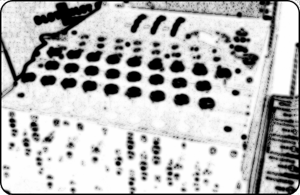There is a recent BBC article on a new attack against a key component of Quantum Cryptography: Key Transportation.
There are 3 main components to a cryptographic system:
– The strength of the algorithms used (close/open, random generator, collision, etc)
– The integrity of the system (implementation, key storage, devices security, etc)
– The transportation of keys (no full or partial interception of the keys, etc)
Quantum Cryptography has for some been seen as the future for ensuring the integrity and detection of any interception attempts during key transportation.
I am not a Quantum Physic expert, but what I understand is that key transportation is done through light, where photons of light are sent to the receiver who will inspect the states of those photons to reconstruct the key. It is similar of sending a stream of bits which make the key, apart from the fact that in Quantum Physics a photon has not just a binary state ...
>>[READ MORE]
 Hot Random Numbers!
Hot Random Numbers!
#39 - Posted on
26 April 2011 - Author: SM - Category: Cryptography
The LavaRND project is a very interesting take on providing a cryptography strong random generator framework.
Both in terms of plans for physical devices to software library.
If only I had more time I would love to try building one of their device, nevertheless, I highly recommend this website as it is full of very interesting information related to randomness and they even have some interesting demo using their random framework. You do not require an interest in cryptography to appreciate the work done.
Next time I need a strong random generator algorithm, I will know where to look :)
http://www.lavarnd.org
...
>>[READ MORE]
 PS3 Hacked and Cryptography
PS3 Hacked and Cryptography
#19 - Posted on
7 January 2011 - Author: SM - Category: Security, Hacking, Cryptography
The recent hack on PS3 where the private key used by Sony to sign their games has been recovered is of course a very bad news for Sony. It finishes to open the door to piracy which started in January 2010. In theory, anyone could now sign (pirated) software to run natively on the PS3.
It is a case of badly implemented cryptography algorithm, in that case, the use a proprietary signing algorithm with a faulty random generator.
Crypto 101 says to NEVER use proprietary/secret algorithms. Now Sony’s will pay the price for not listening :)
The PS3 hack story is a great example of badly implemented cryptography which is as important as the choice of the security controls used to protect an asset.
BBC NEWS ARTICLE
The start of an answer from Sony, which seems to indicate they did not grasp the severity of the issue when first announced about a week ago
...
>>[READ MORE]

 RSS Feeds
RSS Feeds BUGS Package updated to version 4.1.3
BUGS Package updated to version 4.1.3